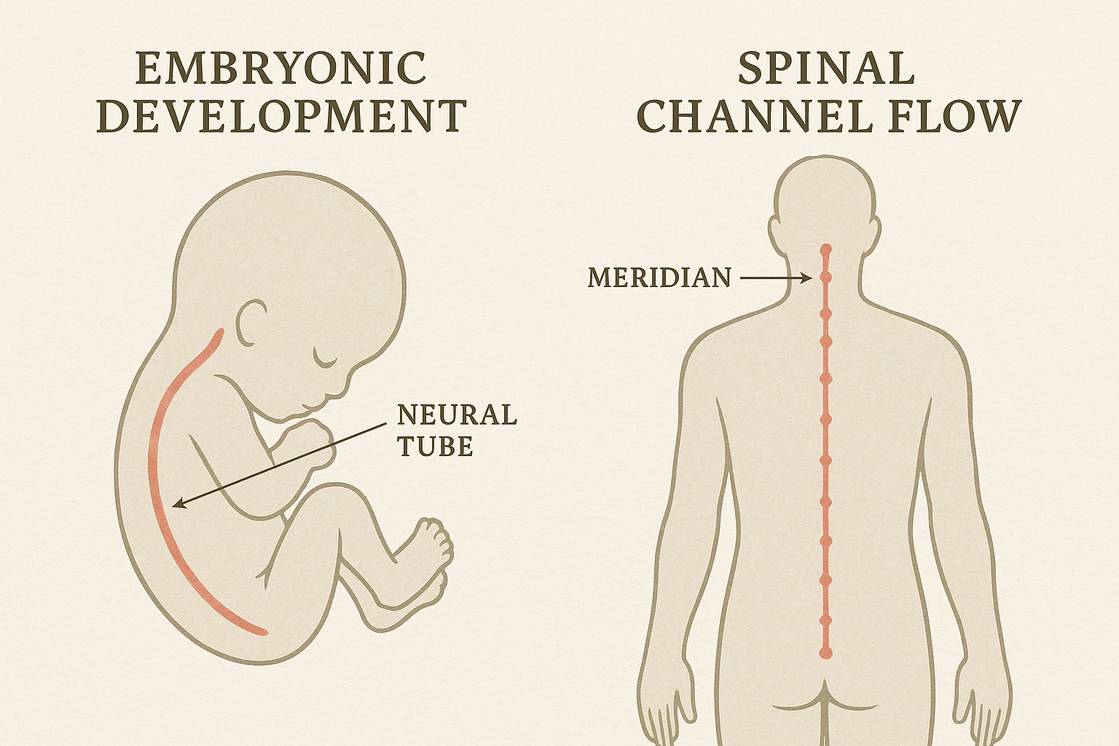The Du Mai: The Master Channel, the Central Axis
The Du Mai (Governing Vessel) is often referred to as the “Sea of Yang Meridians,” but its importance begins even earlier—in embryological development. It is the first meridian to form in the fetus, giving rise to the neural tube, which becomes the spinal cord and central nervous system. In this way, the Du Mai is more than a meridian—it is the energetic and structural axis of the body.

Over time, and particularly with aging or chronic conditions of the nervous system, the Du Mai tends to become rigid or congested. This stiffness can manifest as decreased mobility, poor circulation, emotional rigidity, or cognitive fog.
From a clinical perspective, assessing the Du Mai at the start of a session offers powerful diagnostic insight. You may feel areas where Qi is stagnant and dense, or the opposite—zones that are depleted, collapsed, or flaccid. These observations help guide both the intention and technique of treatment.
Mobilizing the Du Mai—through breath, touch, acupoints, or movement—is a vital step in restoring the body’s capacity to regulate itself. When the central axis is free and flowing, all the other systems can begin to reorganize around it.
The Du Mai (Governing Vessel) is the focal point of this clinical approach.
In most TCM acupuncture protocols, it’s often only accessed through confluent points, with minimal direct engagement. The extraordinary channels—which govern our most fundamental energetic structures—are frequently overlooked and undertreated.
Yet the Du Mai is central to the health of the entire system.
This meridian arises from the embryological midline and is intimately connected to the spinal column and central nervous system—the structural and energetic axis of the body.
It’s the Du Mai that communicates with all other meridians, sending signals through the spine to every organ, tissue, and sensory system. It shapes how we move, how we feel, and how we perceive the world.
Without a healthy and flowing centerline, no matter how effective our treatment is, the system will often revert to its prior state.
Assessment Begins at the Midline
Once we’ve built a picture of the client’s state—through detailed questioning, observation, and intake—we begin with palpation and assessment of the centerline.
By evaluating the movement and responsiveness of the spinal channel, we can correlate what we find with:
- their reported symptoms,
- physical structure and movement patterns,
- energetic tone, and
- any testing you already use (orthopedic, neurological, or otherwise).
This midline assessment becomes the bridge between what is reported and what is present—guiding the treatment to its root.



















0 comments
Leave a comment